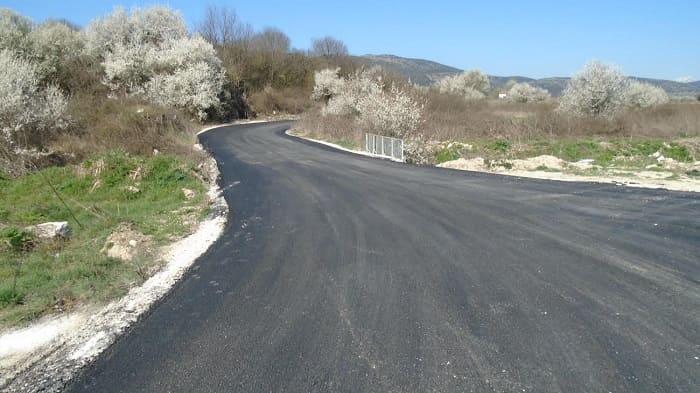This initiative is funded by the European Union through the National Recovery and Resilience Plan "Greece 2.0," as part of the NextGenerationEU program.
The total estimated value of the contract for the 22 sections amounts to €154.82 million (€124,856,224.41 excluding VAT).
The deadline for the completion of the study is set at ten months from the signing of the contract for each section and exclusively pertains to the preparation of the study.
Interested parties may submit a bid for each individual section. The deadline for submitting bids for all sections is April 11, 2025.
The study focuses on the documentation of the existing road network per Municipal Unit (MU) in areas outside of urban planning zones and settlements with fewer than 2,000 inhabitants, as well as settlements legally existing before 1923. The objective is to complete the classification, prioritization, and ratification of the municipal public road network and integrate it into the broader urban and spatial planning framework of the country.
Areas and Corresponding Study Budgets
The documentation aims to categorize the roads based on their geometric characteristics and their role in the road network of each Municipal Unit, with the goal of creating a database for their further prioritization and designation as public municipal roads in accordance with the conditions outlined in Presidential Decree No. 3937/2011.
Considering that the designation of a road as public is a necessary urban planning condition for the developability of plots in areas outside urban plans, unless governed by specific provisions, and acknowledging that the road network of a local government entity is not a local matter, but rather connected to the national network and the protection of the natural environment's geosystems—elements of the nation's natural heritage—the documentation of the existing road network is the first step towards its categorization and subsequent designation as a public municipal road network.
Consequently, the recognition of a road as public has significant implications for urban planning and the development of adjacent properties. This process should not be examined in isolation but as part of a governmental action, as determined by the Council of State (ΣτΕ).
The preparation of the Documentation Study represents the first step in the documentation of the road network and is fundamental to its designation as public. This process ensures the regulation and rationalization of construction outside urban planning areas.
The primary goal of the study is to document the boundaries of municipalities and municipal units (MU), delineated settlements, urban planning zones, and organized infrastructure. It also includes the mapping and classification of the road network in areas outside approved urban planning zones or delineated settlements.
- The documentation studies include reports, maps, and geospatial databases and cover the following:
- The quality control program for the studies and the implementation procedures,
- The mapping of municipal and municipal unit boundaries,
- The mapping of the designated road network and the categorization of the non-recognized road network.
For a road to be documented, it must appear in the most recent orthophotos of the Greek Cadastre or in aerial photographs taken before 1977. Criteria for documentation include:
The location of road sections in relation to the urban planning zones or settlement boundaries,
Recognition of the roads as public,
Mapping and categorization of roads based on legislative and cadastral criteria.
A key prerequisite for the documentation of a road is its appearance in the latest orthophotos of the Greek Cadastre covering the entire country, or in pre-1977 aerial photographs. If it is visible in these sources, it will be included in the documentation study. The primary criteria in the road network documentation process are:
The location of road sections in relation to the approved urban planning scheme or/and the boundaries of the delineated settlements.
Whether the road sections are included in the already recognized or designated road network of the Municipal Unit.
If road sections or roads do not fall within an approved urban planning scheme or within delineated settlements and are not designated as National, Provincial, or Municipal roads, or are not recognized by an official act according to Article 20, paragraph 4 of Law 23, or by the provisions of the last paragraph of case b, paragraph 2 of Article 1 of Presidential Decree 24-31.05.1985 (D' 270), further examination is required.
This includes determining whether:
a) The roads are provided for by a reorganization plan from the Ministry of Agriculture or roads opened under concession agreements from the Greek State, decisions on reorganization, or acts of expropriation under agricultural or settlement laws, where there is a provision that the respective road section remains public and open to common use,
b) The designated coastal zone, which serves circulation needs, provided the road is formed,
c) Roads legally constructed by the state’s will, allowing access to coasts, archaeological sites, national parks, ski resorts, or significant public works (such as dams, military installations, hospitals, municipal water facilities (reservoirs, pumping stations), sewage treatment plants (wastewater treatment plants), solid waste treatment and burial sites, cemeteries, temples, etc.),
d) The network of forest roads.
Furthermore, these roads are examined if they are recorded as roads in the cadastral diagrams of the National Cadastral System, in functioning cadastral records that are over five years old.
Additionally, roads that have been deemed public by a final judicial decision regarding the public nature of the road or that appear in aerial photographs from dates before July 27, 1977 are also considered for inclusion.















